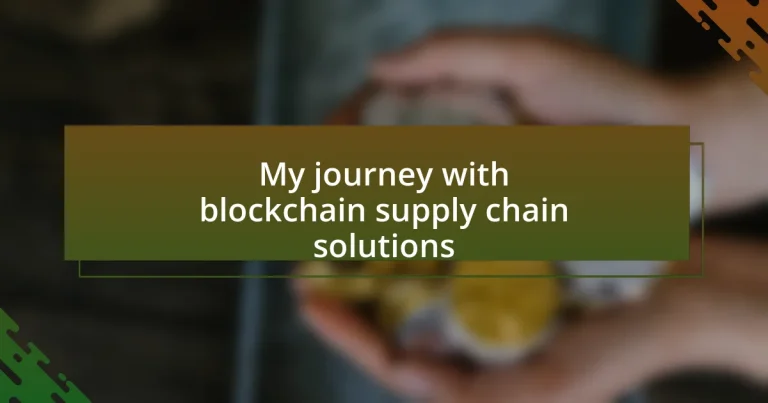Key takeaways:
- Blockchain technology enhances security and transparency by providing a decentralized, tamper-proof ledger for transactions.
- Effective supply chain management is crucial for minimizing waste, optimizing resources, and maintaining product quality.
- Challenges in traditional supply chains include lack of visibility, reliance on intermediaries, and poor inventory management.
- Implementing blockchain in supply chains improves transparency, fosters trust, and enhances inventory management through real-time data sharing.

Introduction to blockchain technology
Blockchain technology is essentially a shared, decentralized ledger that records transactions across many computers. This means that once a transaction is recorded, it cannot easily be altered, which significantly enhances security and transparency. I remember the first time I wrapped my head around this concept; it felt like a light bulb moment—realizing that this technology could revolutionize trust in various industries.
As I delved deeper, I found myself fascinated by how blockchain operates in a peer-to-peer network. Each block in a chain holds a group of transactions, accompanied by a unique cryptographic signature. Have you ever wondered how digital currencies like Bitcoin maintain their integrity? The consensus mechanism in blockchain ensures that the majority of participants need to agree on the validity of transactions, making fraud virtually impossible.
What struck me most about blockchain was its potential beyond cryptocurrencies. As I explored applications in supply chains, I felt an excitement akin to discovering a secret weapon for transparency and efficiency. The idea that every transaction could be traced back to its origin is just mind-boggling, isn’t it? This capability can foster trust among stakeholders in ways we couldn’t previously imagine.
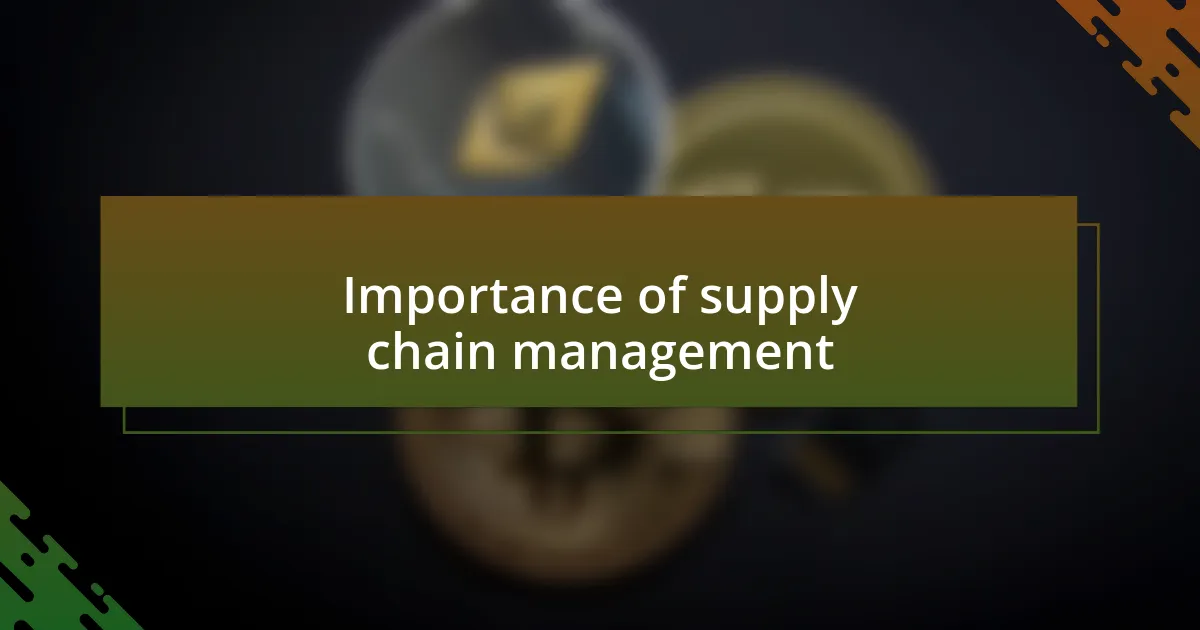
Importance of supply chain management
Supply chain management is crucial in ensuring that products move efficiently from manufacturers to consumers. I’ve seen firsthand how a well-coordinated supply chain can streamline processes, reduce costs, and improve customer satisfaction. When I was involved in a project that required close collaboration between different suppliers, I realized just how much efficiency translates into real value.
- It helps in minimizing waste and optimizing resources.
- Effective management directly impacts a company’s bottom line and profitability.
- Strong supply chains enhance responsiveness to market changes.
- They play a vital role in maintaining product quality and safety.
- Good supply chain practices build trust and loyalty among customers and partners.
In my experience, the importance of supply chain management became crystal clear during a crisis when supply chains were disrupted. There was a moment of panic, yet those companies who had robust supply chain strategies adapted quickly, showcasing the resilience that proper management brings. It taught me that a well-oiled supply chain isn’t just about moving goods—it’s about creating a network of trust and reliability that can weather any storm.
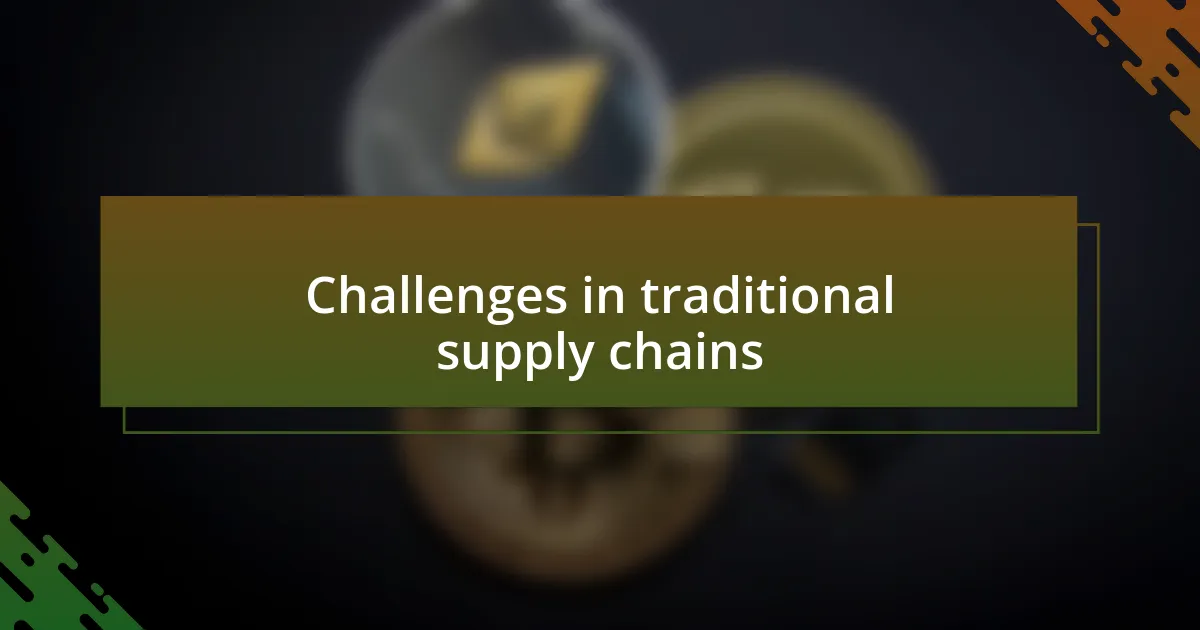
Challenges in traditional supply chains
Supply chains often face numerous challenges that can hinder their effectiveness. One glaring issue is visibility; when I worked on a project that required tracking shipments globally, the lack of real-time data was frustrating. It made coordinating with partners exceedingly difficult, resulting in delays and miscommunication that cost us both time and money.
Another challenge is the reliance on multiple intermediaries, which can complicate processes. I recall a situation where we had to navigate through several layers of suppliers, each adding their own delays. This complexity not only increased operational costs but also muddied accountability, making it hard to pinpoint where issues were arising.
Lastly, traditional supply chains often struggle with inventory management, leading to either stockouts or excess inventory. I experienced a stark moment when I realized how a simple glitch in stock levels could lead to missed sales or wasted resources. It emphasized just how critical it is to have seamless, responsive processes that can adapt to changes in demand.
| Challenge | Description |
|---|---|
| Lack of Visibility | Difficulty in tracking shipments leads to delays and miscommunication. |
| Multiple Intermediaries | Complicated processes that increase costs and muddy accountability. |
| Poor Inventory Management | Results in stockouts or excess inventory, impacting sales and resources. |
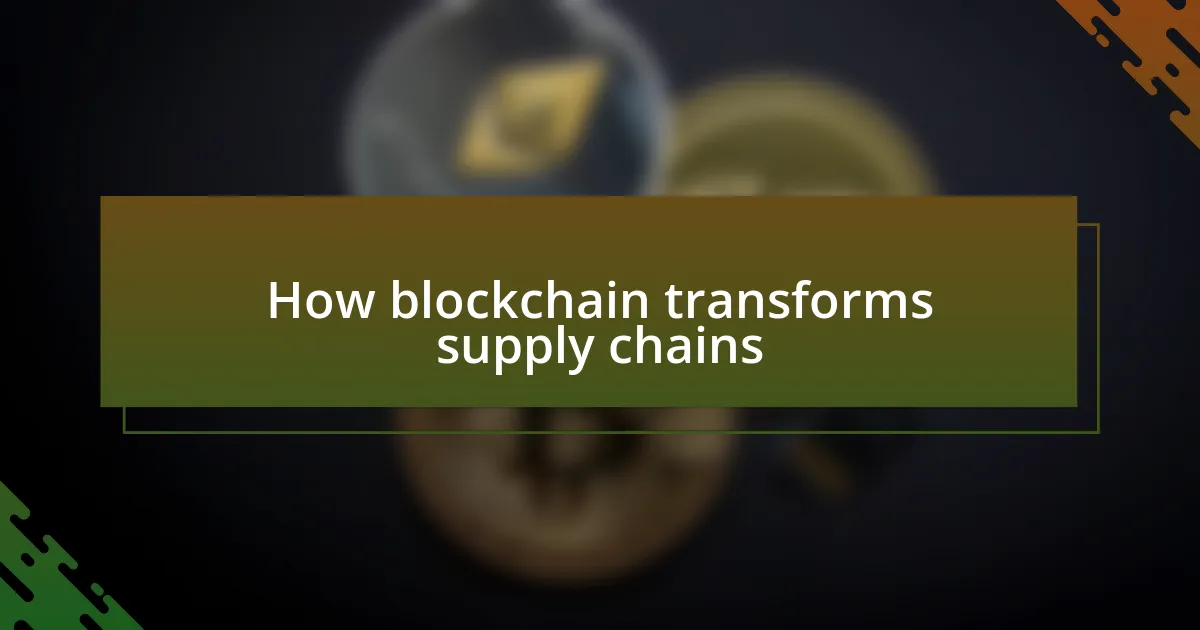
How blockchain transforms supply chains
Implementing blockchain technology fundamentally reshapes how supply chains operate by enhancing transparency and trust. I still remember a time when my team struggled to verify the authenticity of products from suppliers. With blockchain, every transaction is recorded on a tamper-proof ledger visible to all parties involved. Suddenly, tracing the origin of a product became as easy as scanning a code, which not only saved us countless hours but also built trust with our customers.
Once I was knee-deep in a project where revisions and approvals flew back and forth, and I couldn’t help but think—how much more efficient could this be? That’s the beauty of smart contracts in blockchain. They allow agreements to be executed automatically when conditions are met, reducing delays and eliminating the need for manual oversight. This was a game changer in our operations, as it streamlined processes that once felt cumbersome and slow.
Moreover, another compelling aspect I encountered was the improvement in inventory management through real-time data sharing. During one particularly chaotic season, I witnessed how blockchain helped a company monitor stock levels instantaneously, swiftly adjusting orders based on actual demand. Imagine the relief when you realize you can avoid both shortages and surpluses simply by leveraging accurate data. It’s like having a fine-tuned compass guiding every decision, ensuring you navigate your supply chain confidently.
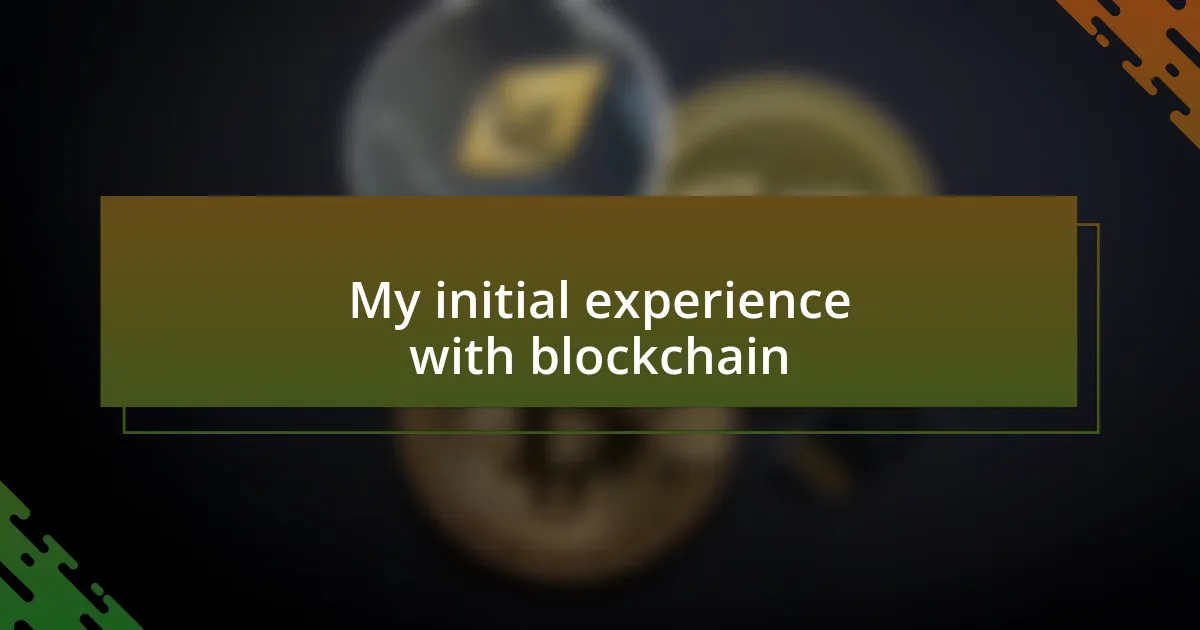
My initial experience with blockchain
When I first encountered blockchain, it felt like stepping into a whole new world. I still recall the excitement mixed with a bit of skepticism—I wondered if this technology could truly deliver on its promises. The moment I saw how a simple transaction was recorded on a decentralized ledger, I realized the potential for unprecedented security and accountability in supply chains.
Not long after that, I was part of a project launch that integrated blockchain into our logistics processes. I vividly remember the first time I traced a product’s journey from its source to our warehouse. The clarity it provided was astonishing; it was as if I had been handed a crystal ball that illuminated every step of the supply chain. How often had we pondered over where delays occurred? With blockchain, those uncertainties evaporated almost instantly.
The emotional shift in my perception was palpable. I had always experienced the tension of relying on trust in our suppliers, but now I felt empowered. Blockchain transformed my anxiety into confidence, knowing that data integrity was maintained at every level. It was a revelation—this technology wasn’t just another buzzword; it was a real solution that could alleviate our concerns and elevate our operations in ways we had only imagined.
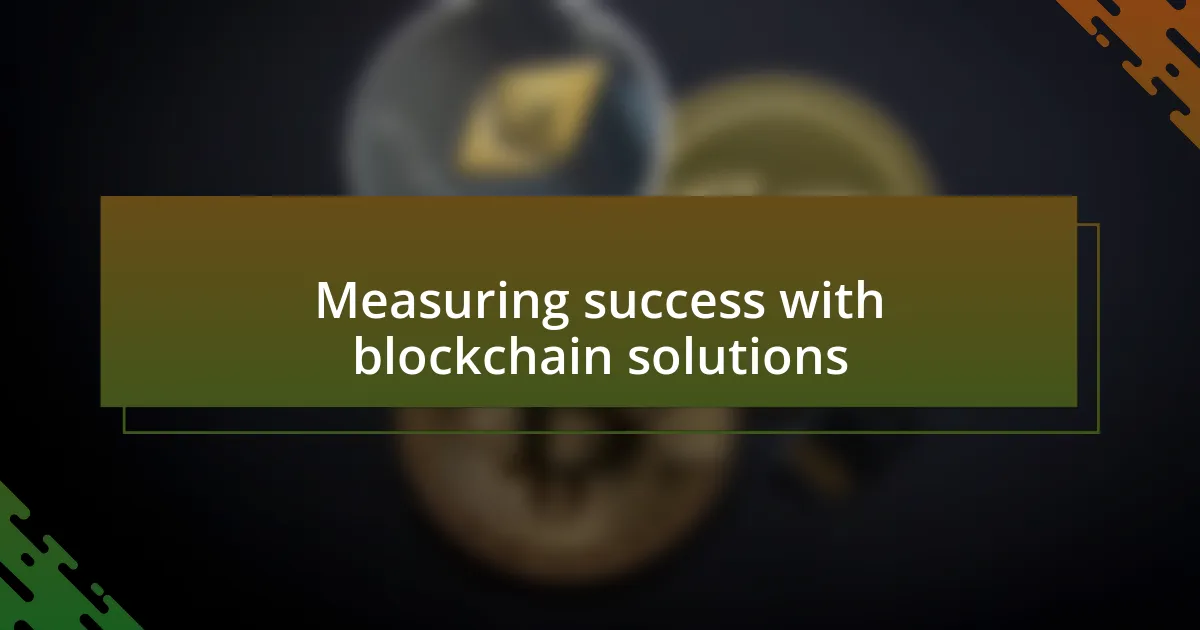
Measuring success with blockchain solutions
Success in implementing blockchain solutions can often be quantified through key performance indicators (KPIs) that reflect operational efficiency. For instance, I remember tracking the reduction in transit times after integrating blockchain. Seeing the average delivery time drop by 20% was not just a number; it felt like a watershed moment that affirmed our investment in this technology. How often can we truly say we’ve transformed our processes so dramatically?
Another important aspect of measuring success is evaluating cost savings. Early on, I meticulously analyzed expenses related to inventory management and found that blockchain helped us minimize overhead. The ability to skip tedious double-entry tasks and reduce discrepancies meant real savings that could be redirected to other critical areas of our supply chain. This kind of tangible benefit can be a real game-changer for teams hesitant about change.
Furthermore, I can’t stress enough how essential customer satisfaction became as an indicator of success. After adopting blockchain, I received direct feedback from our clients regarding the transparency of their orders. Hearing them express relief and confidence in knowing where their products were in real time reassured me that our blockchain solution was not just fulfilling operational needs but also enhancing relationships. Isn’t that what we all aim for—building trust through innovation?













